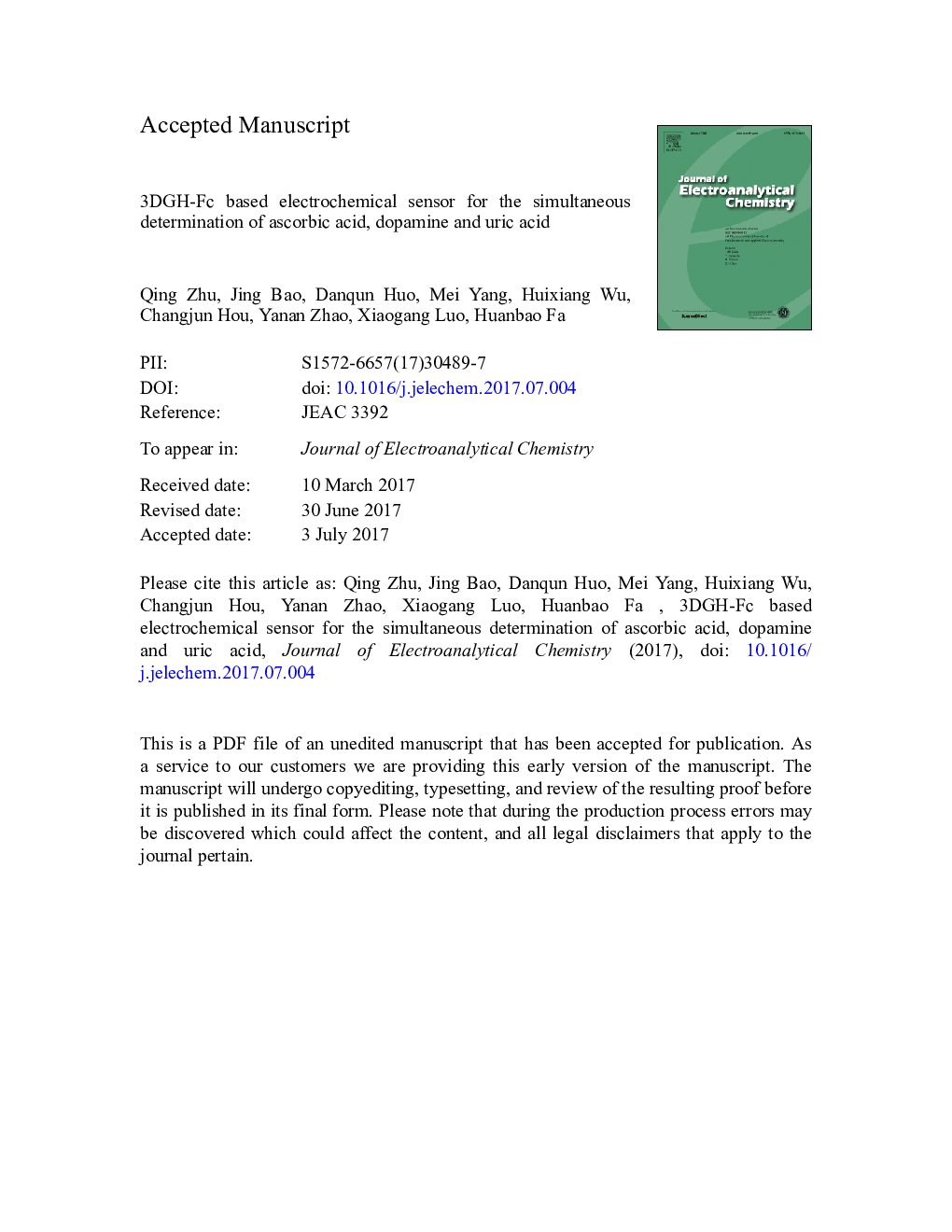| Article ID | Journal | Published Year | Pages | File Type |
|---|---|---|---|---|
| 4907776 | Journal of Electroanalytical Chemistry | 2017 | 35 Pages |
Abstract
In this work, we have been successfully developed a new electrochemical sensor for the simultaneous determination of ascorbic acid (AA), dopamine (DA) and uric acid (UA) using ferrocene hybrid (Fc)/three dimensional graphene hydrogel (3DGH) nanocomposite. The composite materials were characterized using different techniques, such as scanning electron microscopy (SEM), atomic force microscopy (AFM), ultraviolet-visible spectrometer (UV-vis). The electrochemical detection methods using for the individual and simultaneous detection of AA, DA and UA were cyclic voltammetry (CV), differential pulse voltammetry (DPV) and amperometric (i-t). Due to the excellent properties and unique structure of the nanocomposite, this sensor exhibited sharp peaks for the oxidation of AA, DA and UA as compared with the bare glassy carbon electrode (GCE). The linear responses of AA, DA and UA were observed from 20 to 450 μM, 10-180 μM and 8-400 μM with detection limits (S/N = 3) of 0.183 μM (AA), 0.042 μM (DA) and 0.067 μM (UA), respectively. In addition, the developed 3DGH-Fc/GCE electrode showed well anti-interference ability, great stability and excellent reproducibility. Moreover, the analytical application of this electrochemical sensor was successfully conducted for the determination of these species in human serum samples. These features implicate the potential applicability of the developed 3DGH-Fc/GCE biosensor in the development of is promising for the simultaneous determination of DA, AA and UA.
Related Topics
Physical Sciences and Engineering
Chemical Engineering
Chemical Engineering (General)
Authors
Qing Zhu, Jing Bao, Danqun Huo, Mei Yang, Huixiang Wu, Changjun Hou, Yanan Zhao, Xiaogang Luo, Huanbao Fa,
